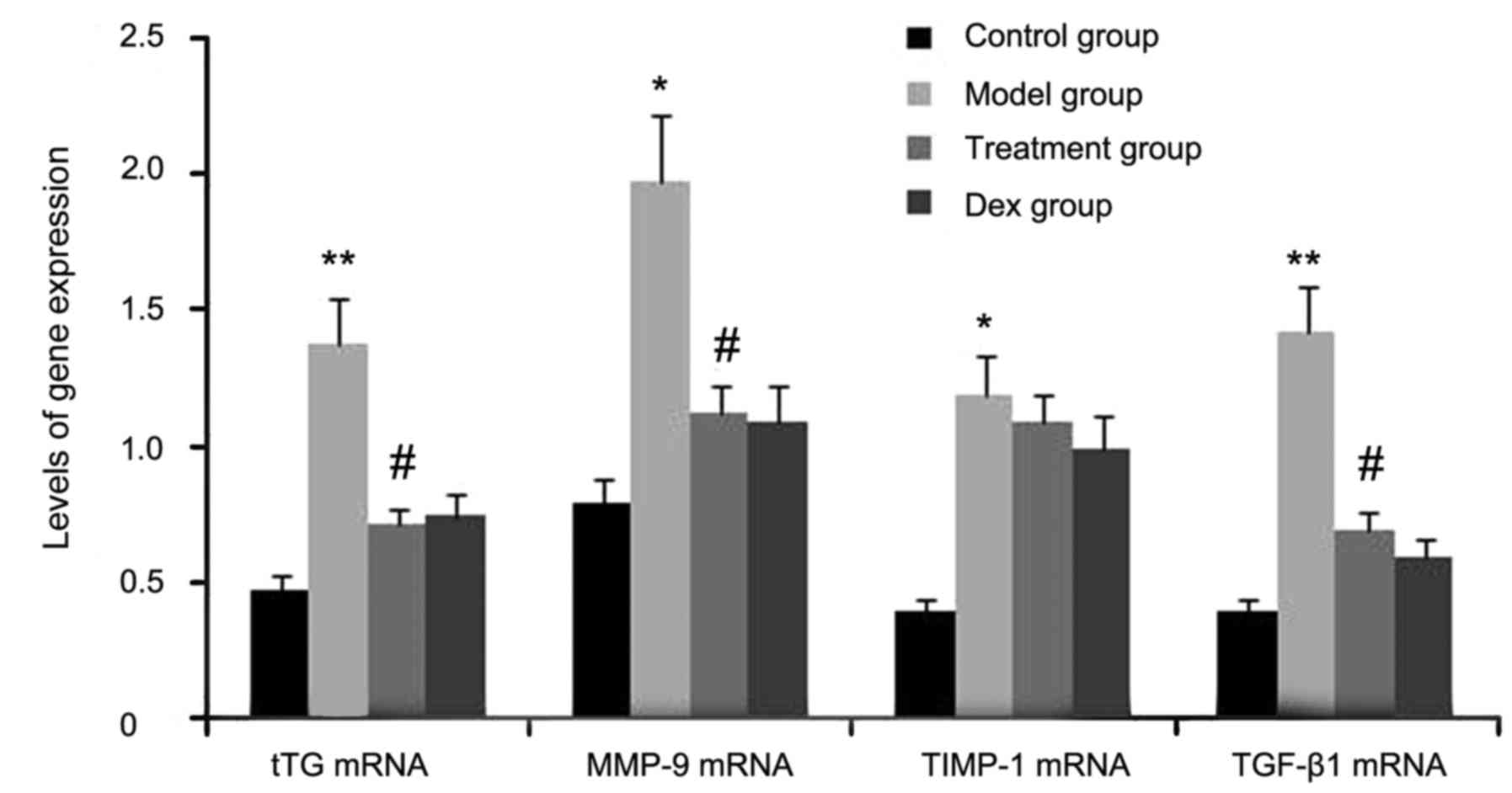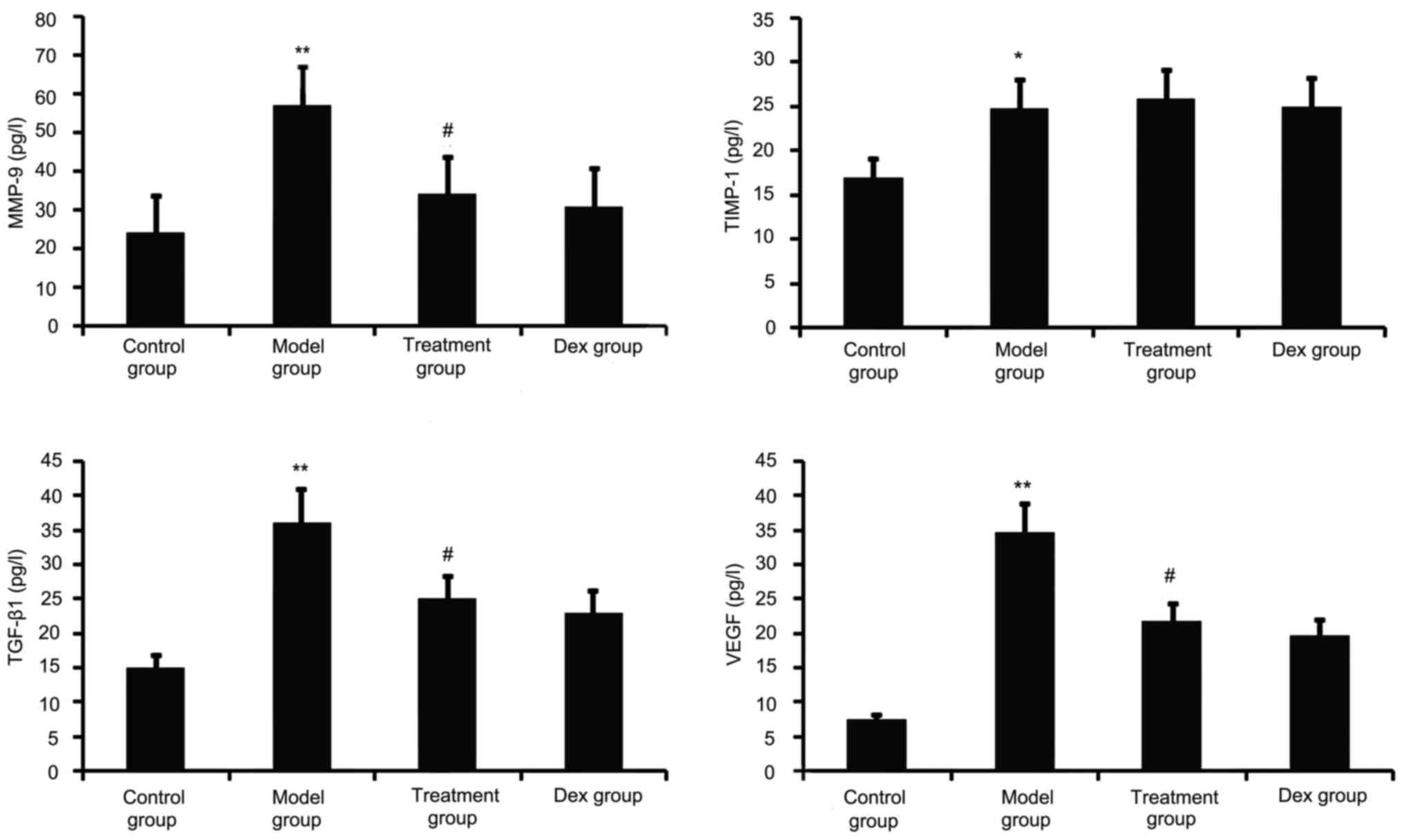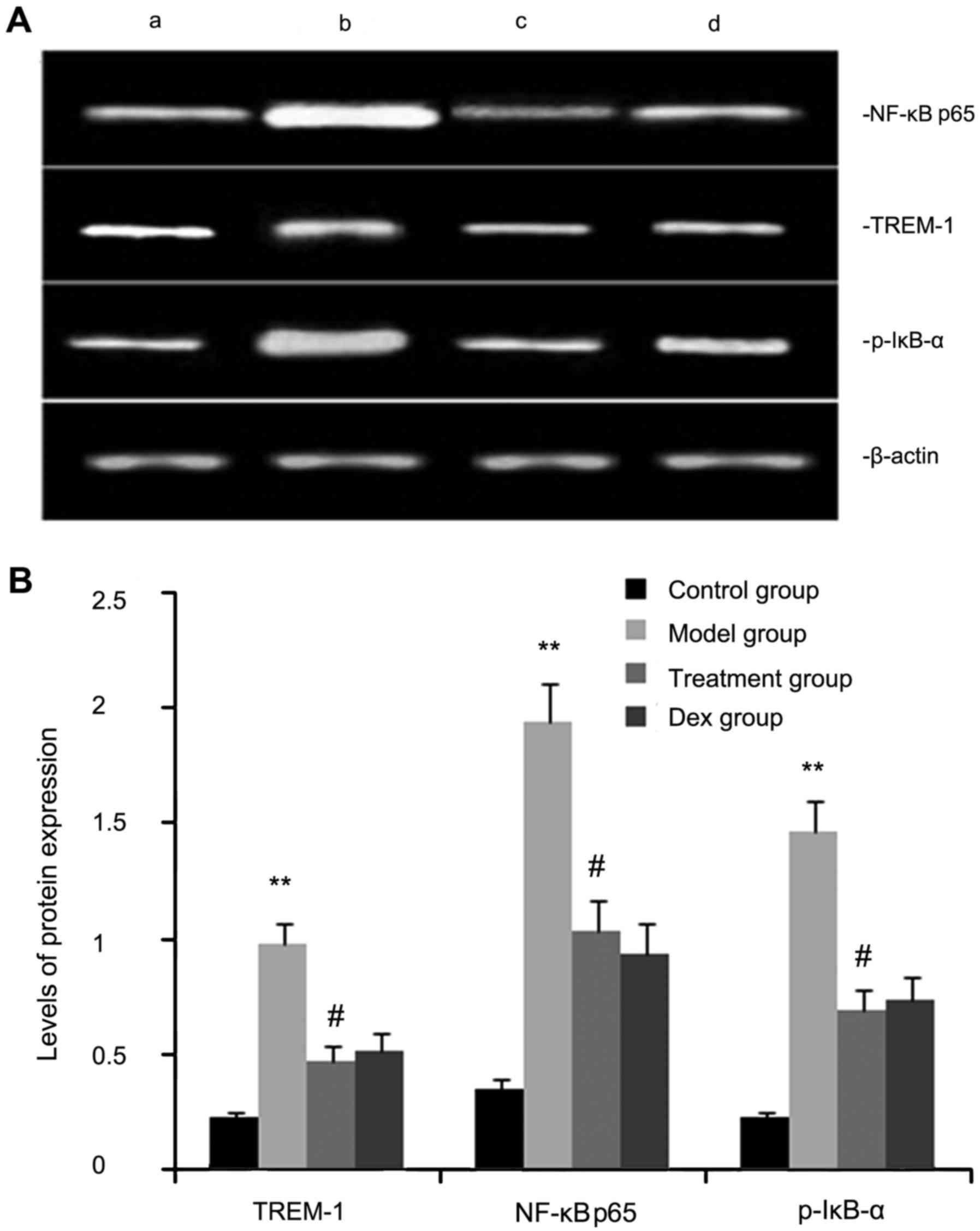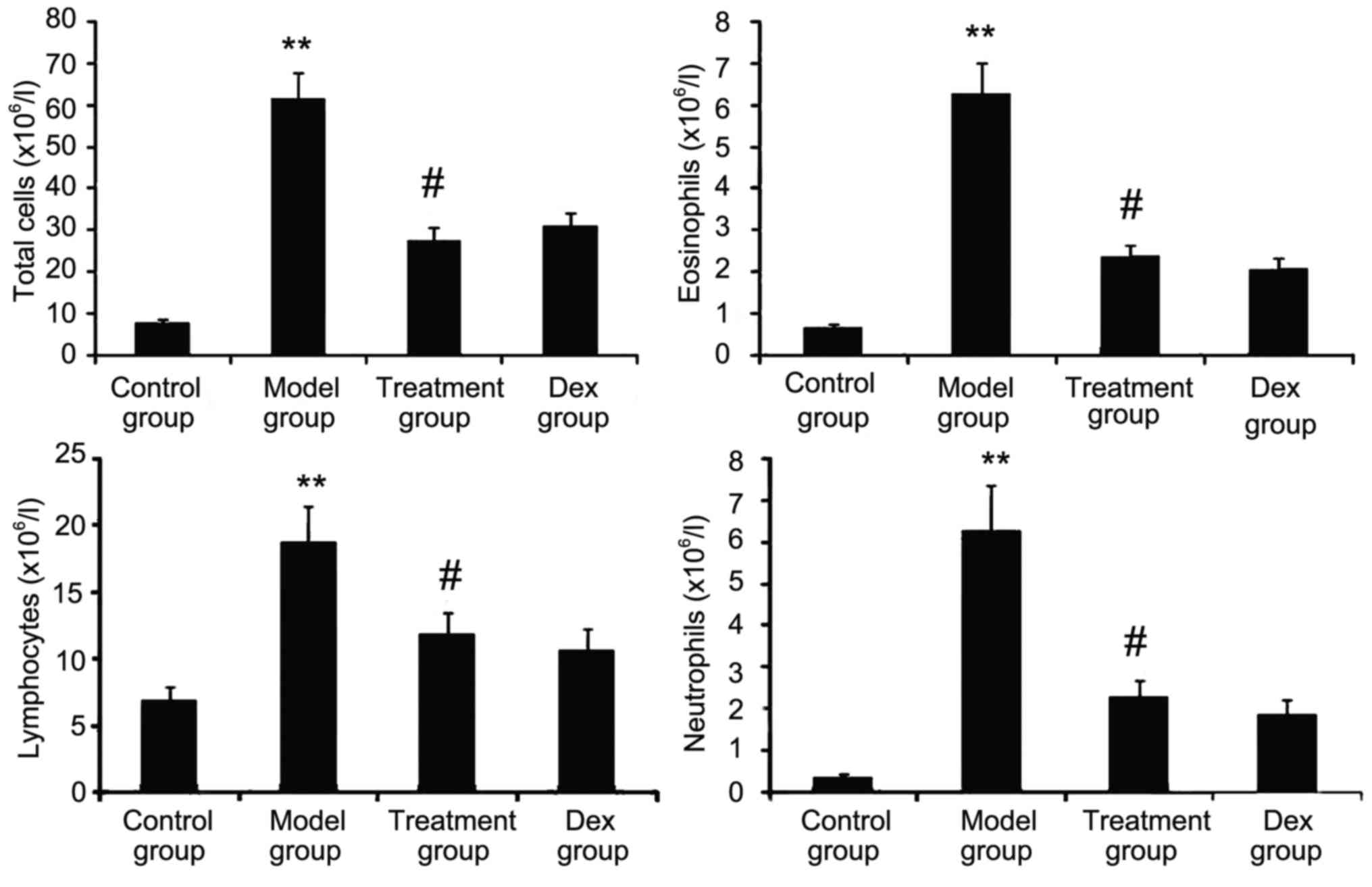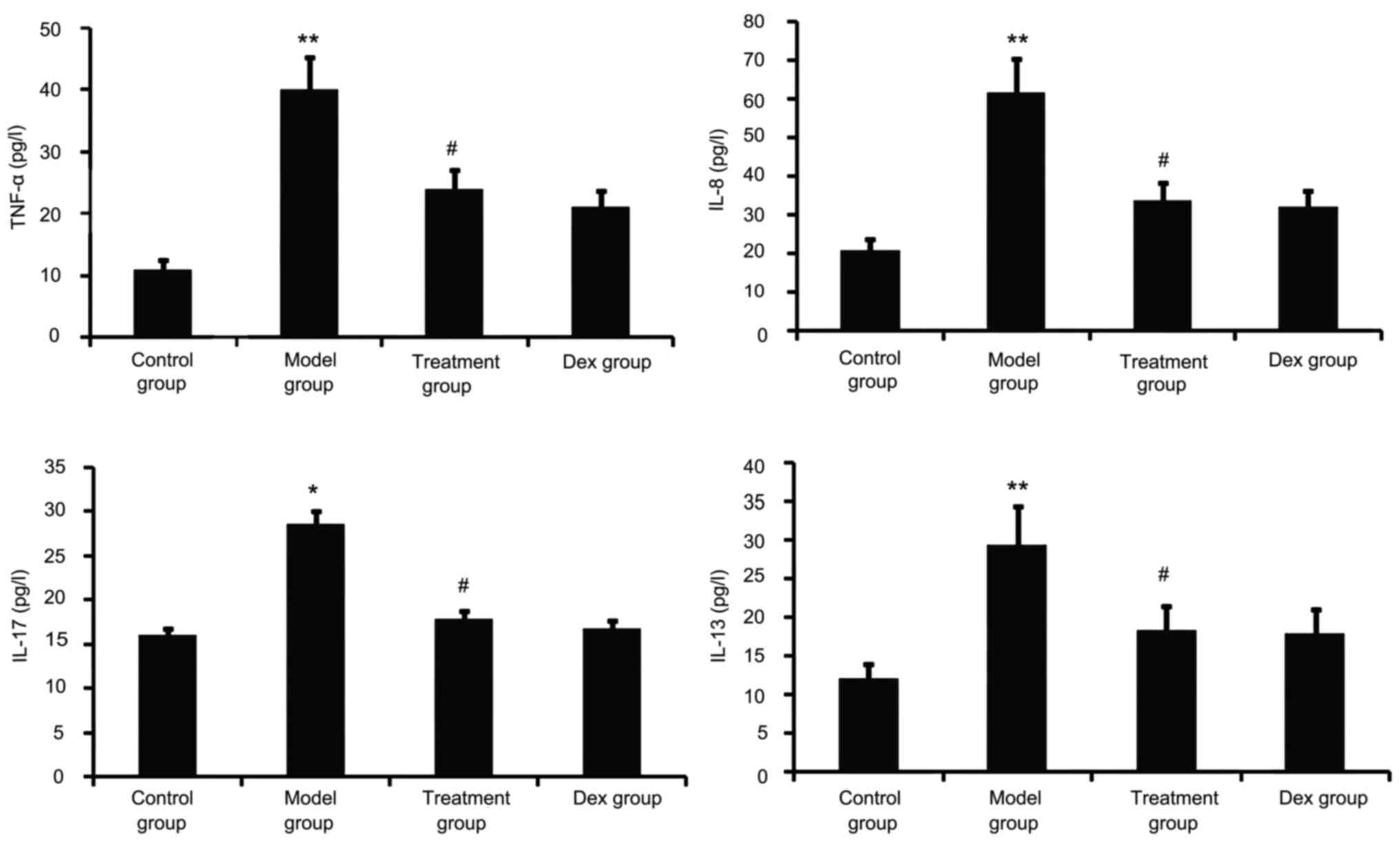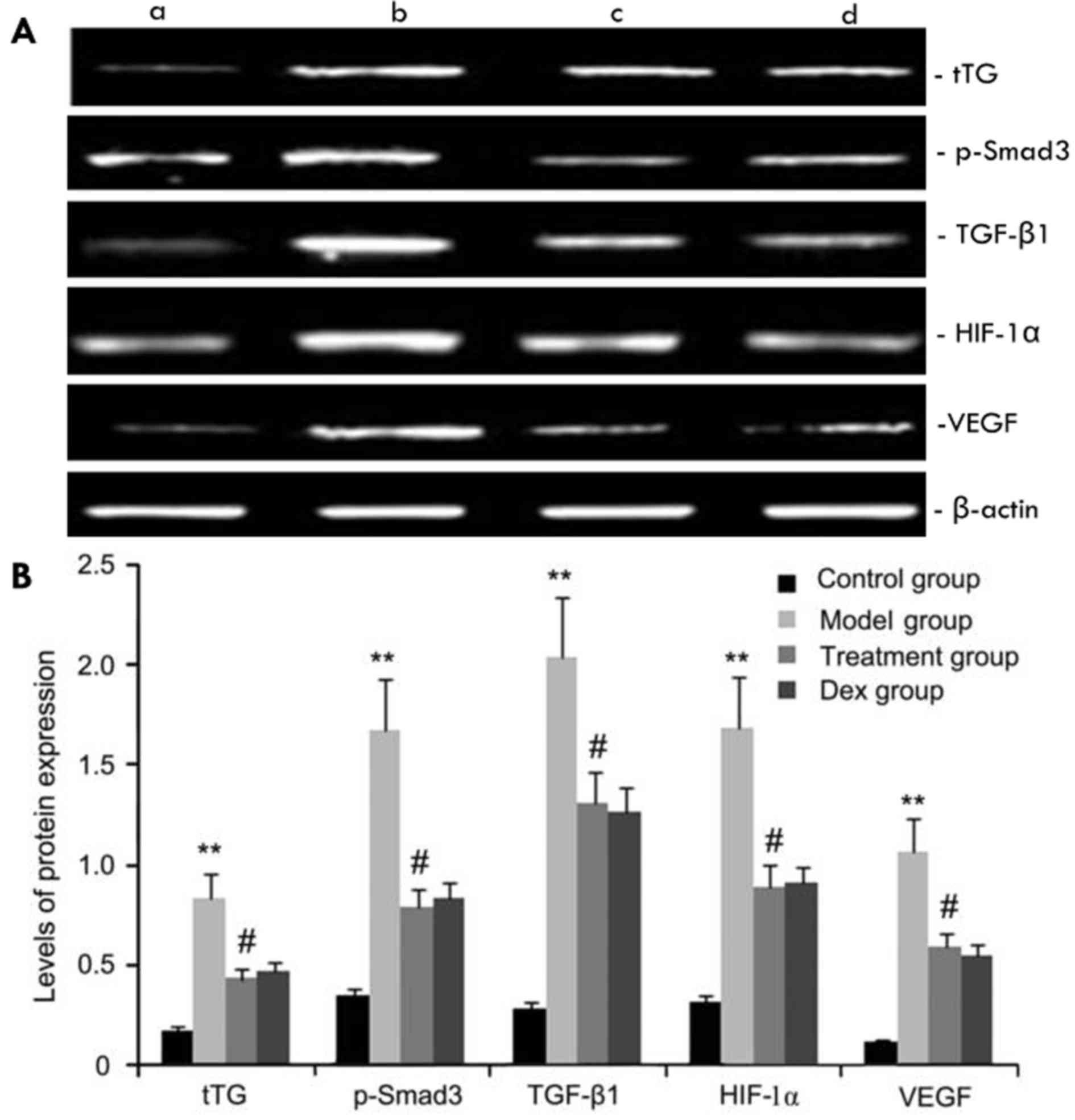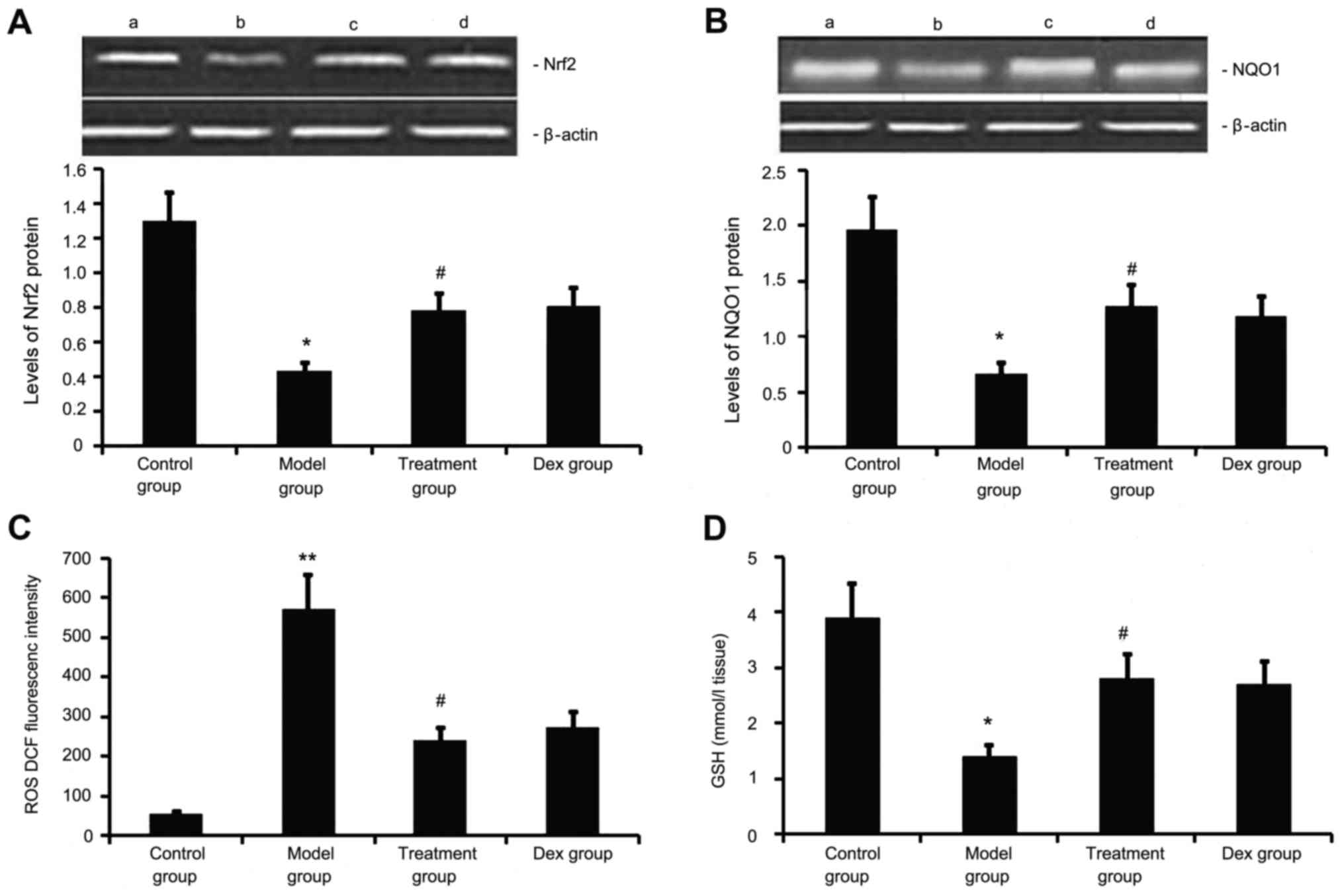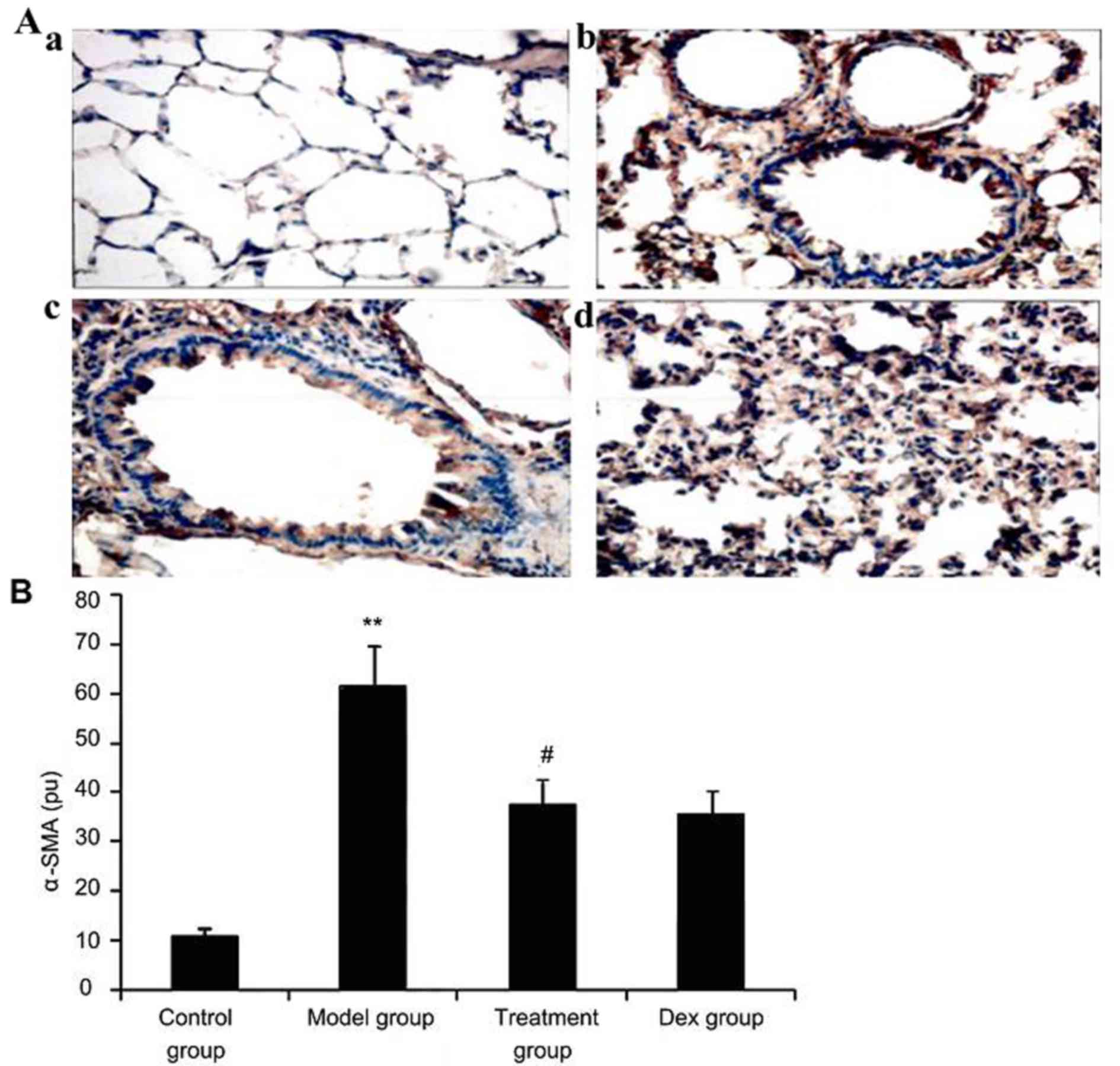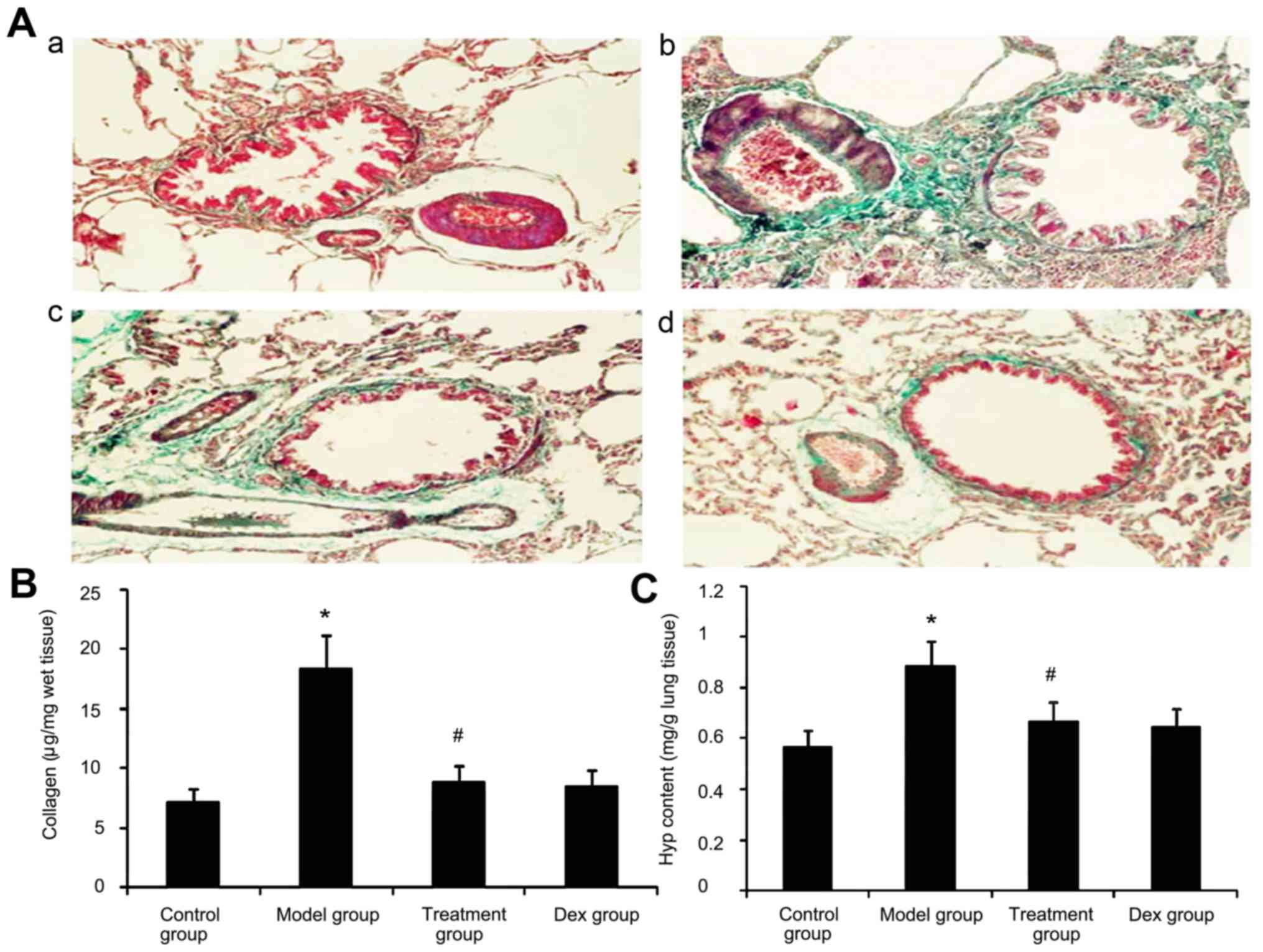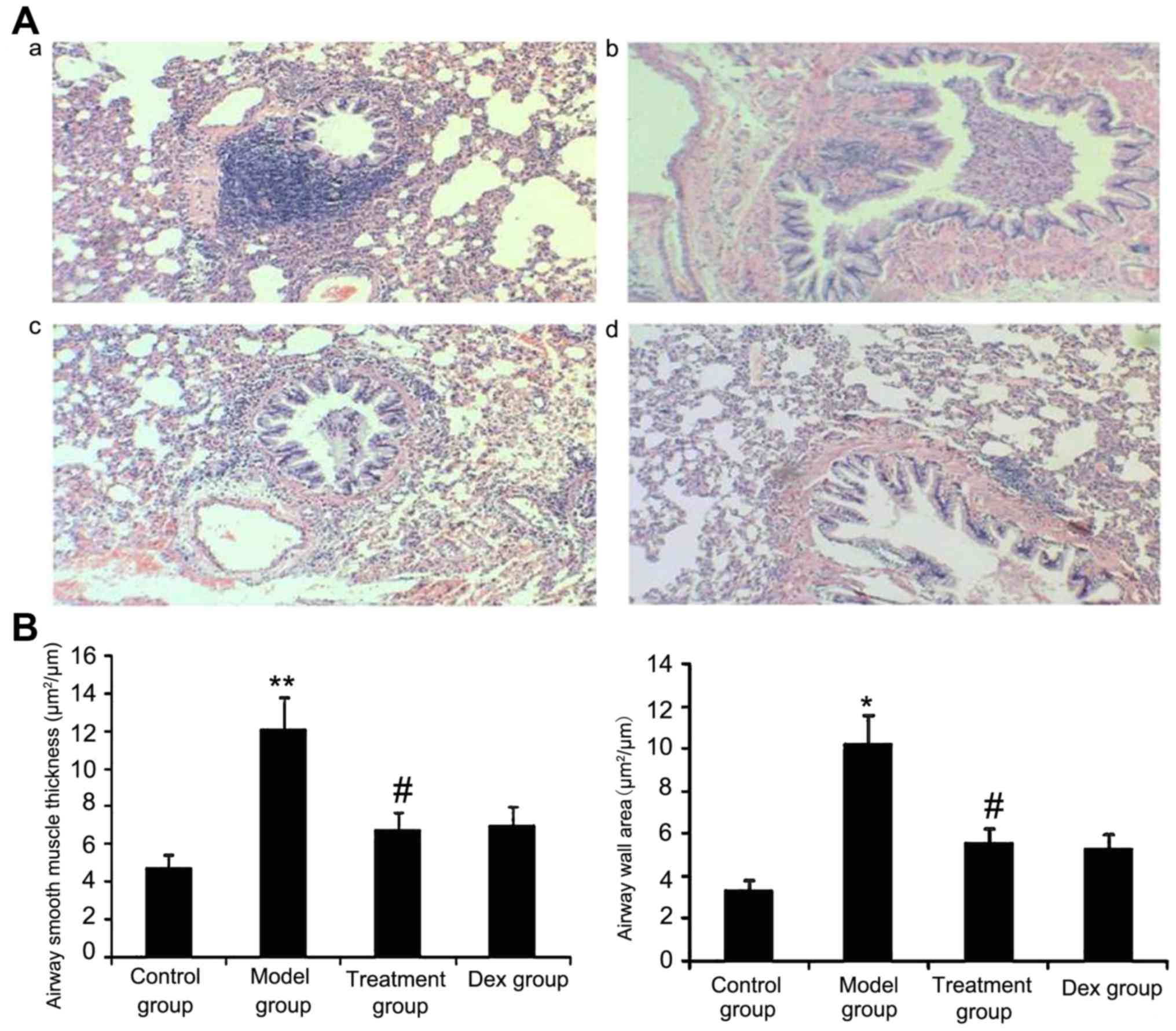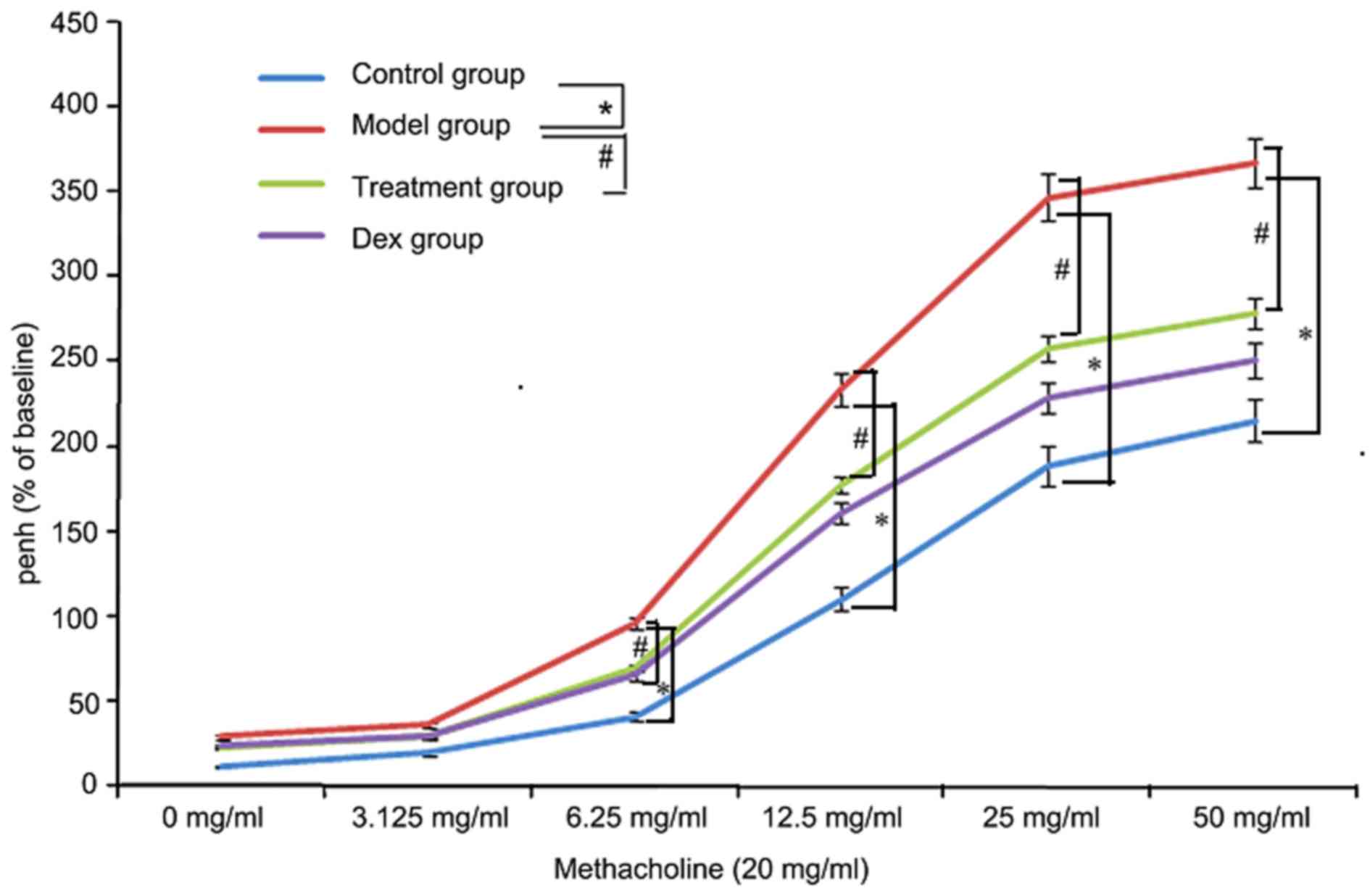|
1
|
Befekadu E, Onofrei C and Colice GL:
Tiotropium in asthma: A systematic review. J Asthma Allergy.
7:11–21. 2014.PubMed/NCBI
|
|
2
|
Roche WR, Beasley R, Williams JH and
Holgate ST: Subepithelial fibrosis in the bronchi of asthmatics.
Lancet. 1:520–524. 1989. View Article : Google Scholar : PubMed/NCBI
|
|
3
|
Aikawa T, Shimura S, Sasaki H, Ebina M and
Takishima T: Marked goblet cell hyperplasia with mucus accumulation
in the airways of patients who died of severe acute asthma attack.
Chest. 101:916–921. 1992. View Article : Google Scholar : PubMed/NCBI
|
|
4
|
Wiggs BR, Bosken C, Paré PD, James A and
Hogg JC: A model of airway narrowing in asthma and in chronic
obstructive pulmonary disease. Am Rev Respir Dis. 145:1251–1258.
1992. View Article : Google Scholar : PubMed/NCBI
|
|
5
|
Nakaoka H, Perez DM, Baek KJ, Das T,
Husain A, Misono K, Im MJ and Graham RM: Gh: A GTP-binding protein
with transglutaminase activity and receptor signaling function.
Science. 264:1593–1596. 1994. View Article : Google Scholar : PubMed/NCBI
|
|
6
|
Lorand L and Graham RM: Transglutaminases:
Crosslinking enzymes with pleiotropic functions. Nat Rev Mol Cell
Biol. 4:140–156. 2003. View
Article : Google Scholar : PubMed/NCBI
|
|
7
|
Iismaa SE, Mearns BM, Lorand L and Graham
RM: Transglutaminases and disease: Lessons from genetically
engineered mouse models and inherited disorders. Physiol Rev.
89:991–1023. 2009. View Article : Google Scholar : PubMed/NCBI
|
|
8
|
Griffin M, Casadio R and Bergamini CM:
Transglutaminases: Nature's biological glues. Biochem J.
368:377–396. 2002. View Article : Google Scholar : PubMed/NCBI
|
|
9
|
Shweke N, Boulos N, Jouanneau C,
Vandermeersch S, Melino G, Dussaule JC, Chatziantoniou C, Ronco P
and Boffa JJ: Tissue transglutaminase contributes to interstitial
renal fibrosis by favoring accumulation of fibrillar collagen
through TGF-beta activation and cell infiltration. Am J Pathol.
173:631–642. 2008. View Article : Google Scholar : PubMed/NCBI
|
|
10
|
Radsak MP, Salih HR, Rammensee HG and
Schild H: Triggering receptor expressed on myeloid cells-1 in
neutrophil inflammatory responses: Differential regulation of
activation and survival. J Immunol. 172:4956–4963. 2004. View Article : Google Scholar : PubMed/NCBI
|
|
11
|
Bouchon A, Dietrich J and Colonna M:
Cutting edge: Inflammatory responses can be triggered by TREM-1, a
novel receptor expressed on neutrophils and monocytes. J Immunol.
164:4991–4995. 2000. View Article : Google Scholar : PubMed/NCBI
|
|
12
|
Bouchon A, Facchetti F, Weigand MA and
Colonna M: TREM-1 amplifies inflammation and is a crucial mediator
of septic shock. Nature. 410:1103–1107. 2001. View Article : Google Scholar : PubMed/NCBI
|
|
13
|
Fassett RG, Robertson IK, Ball MJ,
Geraghty DP and Coombes JS: Effects of atorvastatin on biomarkers
of inflammation in chronic kidney disease. Clin Nephrol. 81:75–85.
2014. View
Article : Google Scholar : PubMed/NCBI
|
|
14
|
Simpson RJ, Signorovitch J, Ramakrishnan
K, Ivanova J, Birnbaum H and Kuznik A: Cardiovascular and economic
outcomes after initiation of atorvastatin versus simvastatin in an
employed population stratified by cardiovascular risk. Am J Ther.
18:436–448. 2011. View Article : Google Scholar : PubMed/NCBI
|
|
15
|
Balli U, Keles GC, Cetinkaya BO, Mercan U,
Ayas B and Erdogan D: Assessment of vascular endothelial growth
factor and matrix metalloproteinase-9 in the periodontium of rats
treated with atorvastatin. J Periodontol. 85:178–187. 2014.
View Article : Google Scholar : PubMed/NCBI
|
|
16
|
Feldman C: Statins for non-cystic fibrosis
bronchiectasis. Lancet Respir Med. 2:431–432. 2014. View Article : Google Scholar : PubMed/NCBI
|
|
17
|
Jain W, Kitagaki K, Businga T, Hussain I,
George C, O'shaughnessy P and Kline JN: CpG-oligodeoxynucleotides
inhibit airway remodeling in a murine model of chronic asthma. J
Allergy Clin Immunol. 110:867–872. 2002. View Article : Google Scholar : PubMed/NCBI
|
|
18
|
Livak KJ and Schmittgen TD: Analysis of
relative gene expression data using real-time quantitative PCR and
the 2(−Delta Delta C(T)) Method. Methods. 25:402–408. 2001.
View Article : Google Scholar : PubMed/NCBI
|
|
19
|
Liu MW, Wang YH, Qian CY and Li H:
Xuebijing exerts protective effects on lung permeability leakage
and lung injury by upregulating Toll-interacting protein expression
in rats with sepsis. Int J Mol Med. 34:1492–1504. 2014.PubMed/NCBI
|
|
20
|
Mizutani N, Nabe T and Yoshino S: IL-17A
promotes the exacerbation of il-33-induced airway
hyperresponsiveness by enhancing neutrophilic inflammation via
CXCR2 signaling in mice. J Immunol. 192:1372–1384. 2004. View Article : Google Scholar
|
|
21
|
Entezari M, Javdan M, Antoine DJ, Morrow
DM, Sitapara RA, Patel V, Wang M, Sharma L, Gorasiya S, Zur M, et
al: Inhibition of extracellular HMGB1 attenuates hyperoxia-induced
inflammatory acute lung injury. Redox Biol. 2:314–322. 2014.
View Article : Google Scholar : PubMed/NCBI
|
|
22
|
Wen H, Gwathmey JK and Xie LH: Oxidative
stress-mediated effects of angiotensin II in the cardiovascular
system. World J Hypertens. 2:34–44. 2012. View Article : Google Scholar : PubMed/NCBI
|
|
23
|
Wei B, Shang YX, Li M, Jiang J and Zhang
H: Cytoskeleton changes of airway smooth muscle cells in juvenile
rats with airway remodeling in asthma and the RhoA/ROCK signaling
pathway mechanism. Genet Mol Res. 13:559–569. 2014. View Article : Google Scholar : PubMed/NCBI
|
|
24
|
Jamall IS, Finelli VN and Que Hee SS: A
simple method to determine nanogram levels of 4-hydroyproline in
biological tissues. Anal Biochem. 112:70–75. 1981. View Article : Google Scholar : PubMed/NCBI
|
|
25
|
Bai A, Eidelman DH, Hogg JC, James AL,
Lambert RK, Ludwig MS, Martin J, McDonald DM, Mitzner WA, Okazawa
M, et al: Proposed nomenclature for quantifying subdivisions of the
bronchial wall. J Appl Physiol (1985). 77:1011–1014.
1994.PubMed/NCBI
|
|
26
|
Takeda N, Kondo M, Ito S, Ito Y, Shimokata
K and Kume H: Role of RhoA inactivation in reduced cell
proliferation of human airway smooth muscle by simvastatin. Am J
Respir Cell Mol Biol. 35:722–729. 2006. View Article : Google Scholar : PubMed/NCBI
|
|
27
|
Mookerjee I, Solly NR, Royce SG, Tregear
GW, Samuel CS and Tang ML: Endogenous relaxin regulates collagen
deposition in an animal model of allergic airway disease.
Endocrinology. 147:754–761. 2006. View Article : Google Scholar : PubMed/NCBI
|
|
28
|
Davies DE and Holgate ST: Asthma: The
importance of epithelial mesenchymal communication in pathogenesis.
Inflammation and the airway epithelium in asthma. Int J Biochem
Cell Biol. 34:1520–1526. 2002. View Article : Google Scholar : PubMed/NCBI
|
|
29
|
Tang ML, Wilson JW, Stewart AG and Royce
SG: Airway remodelling in asthma: Current understanding and
implications for future therapies. Pharmacol Ther. 112:474–488.
2006. View Article : Google Scholar : PubMed/NCBI
|
|
30
|
Barnes PJ: Anti-inflammatory actions of
glucocorticoids: Molecular mechanisms. Clin Sci (Lond). 94:557–572.
1998. View Article : Google Scholar : PubMed/NCBI
|
|
31
|
Boulet LP, Turcotte H, Laviolette M, Naud
F, Bernier MC, Martel S and Chakir J: Airway hyperresponsiveness,
inflammation, and subepithelial collagen deposition in recently
diagnosed versus long-standing mild asthma. Influence of inhaled
corticosteroids. Am J Respir Crit Care Med. 162:1308–1313. 2000.
View Article : Google Scholar : PubMed/NCBI
|
|
32
|
Irwin RS and Richardson ND: Side effects
with inhaled corticosteroids: The physician's perception. Chest.
130 1 Suppl:41S–53S. 2006. View Article : Google Scholar : PubMed/NCBI
|
|
33
|
Johnson BA, Iacono AT, Zeevi A, McCurry KR
and Duncan SR: Statin use is associated with improved function and
survival of lung allografts. Am J Respir Crit Care Med.
167:1271–1278. 2003. View Article : Google Scholar : PubMed/NCBI
|
|
34
|
McKay A, Leung BP, McInnes IB, Thomson NC
and Liew FY: A novel anti-inflammatory role of simvastatin in a
murine model of allergic asthma. J Immunol. 172:2903–2908. 2004.
View Article : Google Scholar : PubMed/NCBI
|
|
35
|
Zeki AA, Franzi L, Last J and Kenyon NJ:
Simvastatin inhibits airway hyperreactivity: Implications for the
mevalonate pathway and beyond. Am J Respir Crit Care Med.
180:731–740. 2009. View Article : Google Scholar : PubMed/NCBI
|
|
36
|
Chiba Y, Arima J, Sakai H and Misawa M:
Lovastatin inhibits bronchial hyperresponsiveness by reducing RhoA
signaling in rat allergic asthma. Am J Physiol Lung Cell Mol
Physiol. 294:L705–L713. 2008. View Article : Google Scholar : PubMed/NCBI
|
|
37
|
Chiba Y, Sato S and Misawa M: Inhibition
of antigen-induced bronchial smooth muscle hyperresponsiveness by
lovastatin in mice. J Smooth Muscle Res. 44:123–128. 2008.
View Article : Google Scholar : PubMed/NCBI
|
|
38
|
Sánchez-Lara AC, Elliott J, Syme HM, Brown
CA and Haylor JL: Feline chronic kidney disease is associated with
upregulation of transglutaminase 2: A collagen cross-linking
enzyme. Vet Pathol. 52:513–523. 2015. View Article : Google Scholar : PubMed/NCBI
|
|
39
|
Sime PJ and O'Reilly KM: Fibrosis of the
lung and other tissues: New concepts in pathogenesis and treatment.
Clin Immunol. 99:308–319. 2001. View Article : Google Scholar : PubMed/NCBI
|
|
40
|
Griffin M, Smith LL and Wynne J: Changes
in transglutaminase activity in an experimental model of pulmonary
fibrosis induced by paraquat. Br J Exp Pathol. 60:653–661.
1979.PubMed/NCBI
|
|
41
|
Olsen KC, Sapinoro RE, Kottmann RM,
Kulkarni AA, Iismaa SE, Johnson GV, Thatcher TH, Phipps RP and Sime
PJ: Transglutaminase 2 and its role in pulmonary fibrosis. Am J
Respir Crit Care Med. 184:699–707. 2011. View Article : Google Scholar : PubMed/NCBI
|
|
42
|
Genua M, Rutella S, Correale C and Danese
S: The triggering receptor expressed on myeloid cells (TREM) in
inflammatory bowel disease pathogenesis. J Transl Med. 12:2932014.
View Article : Google Scholar : PubMed/NCBI
|
|
43
|
Erlank H, Elmann A, Kohen R and Kanner J:
Polyphenols activate Nrf2 in astrocytes via H2O2, semiquinones, and
quinones. Free Radic Biol Med. 51:2319–2327. 2011. View Article : Google Scholar : PubMed/NCBI
|
|
44
|
Park JS, Jung JS, Jeong YH, Hyun JW, Le
TK, Kim DH, Choi EC and Kim HS: Antioxidant mechanism of isoflavone
metabolites in hydrogen peroxide-stimulated rat primary astrocytes:
Critical role of hemeoxygenase-1 and NQO1 expression. J Neurochem.
119:909–919. 2011. View Article : Google Scholar : PubMed/NCBI
|
|
45
|
Hou DX, Korenori Y, Tanigawa S,
Yamada-Kato T, Nagai M, He X and He J: Dynamics of Nrf2 and Keap1
in ARE-mediated NQO1 expression by wasabi 6-(methylsulfinyl)hexyl
isothiocyanate. J Agric Food Chem. 59:11975–11982. 2011. View Article : Google Scholar : PubMed/NCBI
|
|
46
|
Lee IS, Lim J, Gal J, Kang JC, Kim HJ,
Kang BY and Choi HJ: Anti-inflammatory activity of xanthohumol
involves heme oxygenase-1 induction via NRF2-ARE signaling in
microglial BV2 cells. Neurochem Int. 58:153–160. 2011. View Article : Google Scholar : PubMed/NCBI
|
|
47
|
Barbaro MP, Spanevello A, Palladino GP,
Salerno FG, Lacedonia D and Carpagnano GE: Exhaled matrix
metalloproteinase-9 (MMP-9) in different biological phenotypes of
asthma. Eur J Intern Med. 25:92–96. 2014. View Article : Google Scholar : PubMed/NCBI
|
|
48
|
Possa SS, Charafeddine HT, Righetti RF, da
Silva PA, Almeida-Reis R, Saraiva-Romanholo BM, Perini A, Prado CM,
Leick-Maldonado EA, Martins MA and Tibério Ide F: Rho-kinase
inhibition attenuates airway responsiveness, inflammation, matrix
remodeling, and oxidative stress activation induced by chronic
inflammation. Am J Physiol Lung Cell Mol Physiol. 303:L939–L952.
2012. View Article : Google Scholar : PubMed/NCBI
|
|
49
|
Yeo NK, Eom DW, Oh MY, Lim HW and Song YJ:
Expression of matrix metalloproteinase 2 and 9 and tissue inhibitor
of metalloproteinase 1 in nonrecurrent vs recurrent nasal polyps.
Ann Allergy Asthma Immunol. 111:205–210. 2013. View Article : Google Scholar : PubMed/NCBI
|
|
50
|
Che Z, Zhu X, Yao C, Liu Y, Chen Y, Cao J,
Liang C and Lu Y: The association between the C-509T and T869C
polymorphisms of TGF-β1 gene and the risk of asthma: A
meta-analysis. Hum Immunol. 75:141–150. 2014. View Article : Google Scholar : PubMed/NCBI
|
|
51
|
Baek KJ, Cho JY, Rosenthal P, Alexander
LE, Nizet V and Broide DH: Hypoxia potentiates allergen induction
of HIF-1α, chemokines, airway inflammation, TGF-β1, and airway
remodeling in a mouse model. Clin Immunol. 147:27–37. 2013.
View Article : Google Scholar : PubMed/NCBI
|
|
52
|
Mirzoeva S, Franzen CA and Pelling JC:
Apigenin inhibits TGF-β-induced VEGF expression in human prostate
carcinoma cells via a Smad2/3- and Src-dependent mechanism. Mol
Carcinog. 53:598–609. 2014.PubMed/NCBI
|
|
53
|
Le Cras TD, Acciani TH, Mushaben EM,
Kramer EL, Pastura PA, Hardie WD, Korfhagen TR, Sivaprasad U,
Ericksen M, Gibson AM, et al: Epithelial EGF receptor signaling
mediates airway hyperreactivity and remodeling in a mouse model of
chronic asthma. Am J Physiol Lung Cell Mol Physiol. 300:L414–L421.
2011. View Article : Google Scholar : PubMed/NCBI
|
|
54
|
Park SJ, Lee KS, Lee SJ, Kim SR, Park SY,
Jeon MS, Lee HB and Lee YC: L-2-Oxothiazolidine-4-carboxylic acid
or α-lipoic acid attenuates airway remodeling: Involvement of
nuclear factor-κB (NF-κB), nuclear factor erythroid 2p45-related
factor-2 (Nrf2), and hypoxia-inducible factor (HIF). Int J Mol Sci.
13:7915–7937. 2012. View Article : Google Scholar : PubMed/NCBI
|
|
55
|
Fuchimoto Y, Kanehiro A, Miyahara N, Koga
H, Ikeda G, Waseda K, Tanimoto Y, Ueha S, Kataoka M, Gelfand EW and
Tanimoto M: Requirement for chemokine receptor 5 in the development
of allergen-induced airway hyperresponsiveness and inflammation. Am
J Respir Cell Mol Biol. 45:1248–1255. 2011. View Article : Google Scholar : PubMed/NCBI
|















